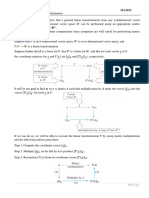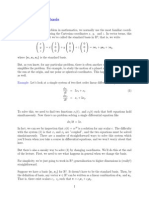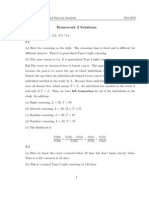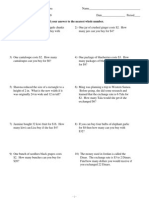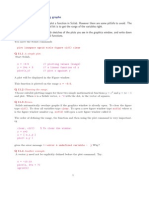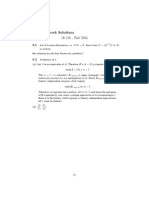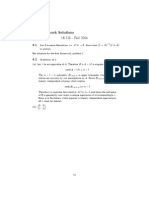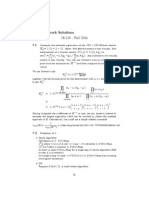0% found this document useful (0 votes)
75 views1 pageQuestionnaire Linear Algebra: Lxy Xyx R R
1) The coordinate vector of (3,1) with respect to the basis U = {(1,1), (1,-1)} is (2,1). A graph comparing the coordinate systems E and U shows the vector (3,1) represented as (2,1) with respect to U.
2) The coordinate vector of (3,1) with respect to the basis V = {(3,2), (4,3)} is found using the change of basis matrix from U to V.
3) The matrix representing a linear transformation L from R^2 to R^2 depends on the basis used. The change of basis matrix allows converting between representation matrices with respect to different bases
Uploaded by
thermopolis3012Copyright
© © All Rights Reserved
We take content rights seriously. If you suspect this is your content, claim it here.
Available Formats
Download as DOC, PDF, TXT or read online on Scribd
0% found this document useful (0 votes)
75 views1 pageQuestionnaire Linear Algebra: Lxy Xyx R R
1) The coordinate vector of (3,1) with respect to the basis U = {(1,1), (1,-1)} is (2,1). A graph comparing the coordinate systems E and U shows the vector (3,1) represented as (2,1) with respect to U.
2) The coordinate vector of (3,1) with respect to the basis V = {(3,2), (4,3)} is found using the change of basis matrix from U to V.
3) The matrix representing a linear transformation L from R^2 to R^2 depends on the basis used. The change of basis matrix allows converting between representation matrices with respect to different bases
Uploaded by
thermopolis3012Copyright
© © All Rights Reserved
We take content rights seriously. If you suspect this is your content, claim it here.
Available Formats
Download as DOC, PDF, TXT or read online on Scribd
/ 1

